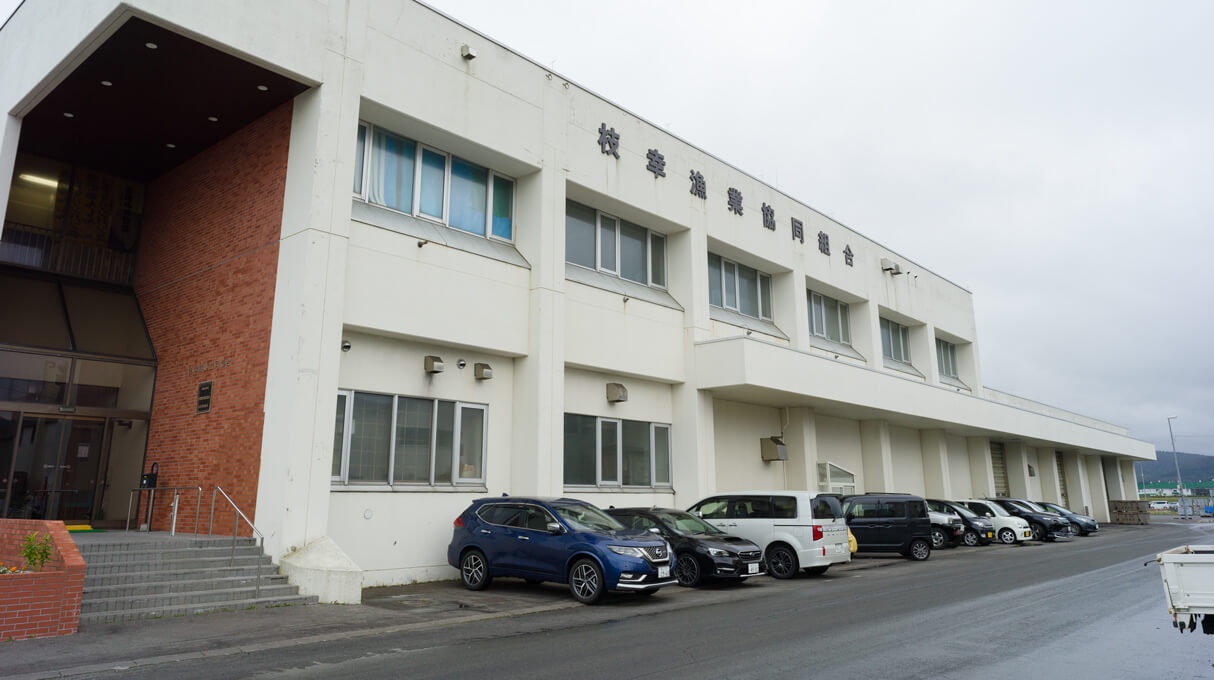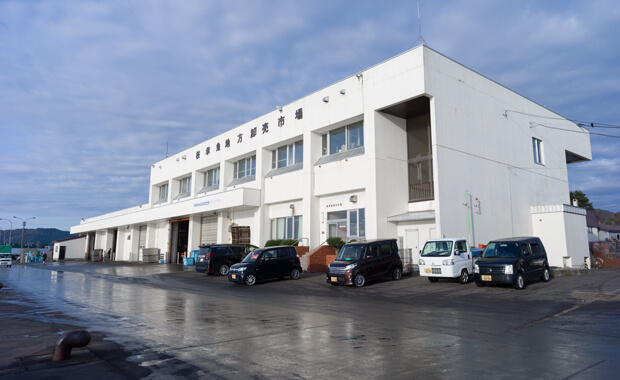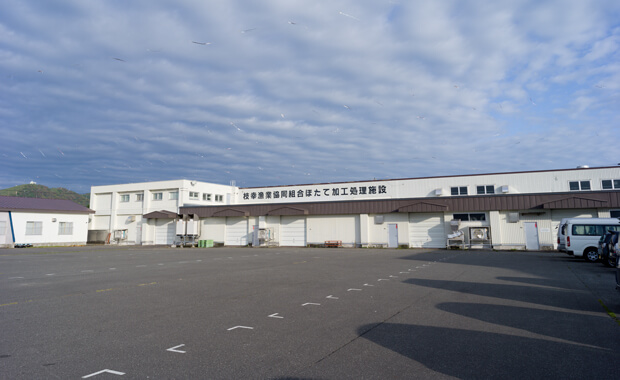who are dedicated to nurturing and protecting the ocean.
Philosophy
Our fishery cooperative promotes the development of an autonomic organization
with the goal of improving our economic and social standing, and increasing our production capacity.
"One for all, and all for one" is our motto for building a fair and bountiful society!
Principles
For bountiful seas,
and the brighter future of the fishing village of Esashi
In April of 1945, in accordance with the revision of fishery laws, fishery cooperative union laws were enacted, and when the fisheries association was disbanded, and the Esashi Fishery Cooperative Union was established. Since then, we have faced numerous challenges and difficulties, overcoming each and continuing to the present.
It is our job to make the oceans pioneered by our ancestors bountiful again, and to do so we must be thankful for the blessings of nature, and do everything in our power to maintain and preserve our resources.
Cooperative Movements
With a unified spirit of "autonomy, independence, and mutual aid,"
which is the basic principle of the union, we seek to make the seaside town happy and contribute to the community.
Purpose
and Mission
- Improve production power of union member households and promote the fishery industry.
- Improve economic and social standing of union member households.
- Provide convenience as a local financial institution.
Activites
Where savings is concerned, we strictly adhere to the "JF Marine Bank Basic Policy" and safety net provided by the fishery cooperative union credit business, and thus protect the funds of our members. Where loans are concerned, there are a number of loans available through the membership fishery-related loans, members and marine mates livelihood-related loans, local public loans, and various insurance agencies that are utilized to provide the necessary funding for our members.
(Caution) JF Marine Bank basic policies are common policies regarded throughout the nation, and must be strictly obeyed by fishery cooperative unions to preserve fiscal soundness.
Current Condition of the Union (as of December 31, 2024)
|
Name |
Esashi Fishery Cooperative Union |
|
Location |
Esashi-cho Saiwai-cho 7888, |
|
Phone Number |
|
Established |
August 2,1949 |
|
Capital |
4,422 million yen |
|
Representative |
Representative of Board of Directors Chairman Kenji Sakuraba |

Esashi Fishery Cooperative Union Main Office
Administration Department/Guidance Department/Trust Department/Economy Department (1F)
LocationEsashi-cho Saiwai-cho 7888, Esashi-gun, HokkaidoGoogleMap
Phone Number
0163-62-1285(Rep)

Local Wholesale Fish Market
Beginning in March, king crab, horsehair crab, and scallops appear on the market, while octopus joins around May, and salmon and other Esashi products appear from around September.
Number of buyers - 41/Total area - 1569.54㎡
LocationEsashi-cho Saiwai-cho 7888, Esashi-gun, HokkaidoGoogleMap
Phone Number0163-62-1440

Fishery Processing Plant
Scallops, horsehair crabs, salmon, and other fish are processed here. The processing facility for frozen scallop adductor muscles are certified according to EU HACCP, and US HACCP system.
LocationEsashi-cho Shinko-cho 7962-26, Esashi-gun, HokkaidoGoogleMap
Phone Number0163-62-1540

Dried Scallop Adductor Muscle Processing Plant
Dried scallop adductor muscle production and sales are conducted here. The adductor muscles are dried in the sun during the summer.
LocationEsashi-cho Shinko-cho 7962-3, Esashi-gun, HokkaidoGoogleMap
Phone Number0163-62-3711

Uotsuki-no-mori
In 2001, the Esashi Fishery Cooperative Union acquired 9.5 ha in Yamausu, and in 2013, 153 ha in Utanobori district. Ancient fishermen said, "If you want to increase the fish, you must plant trees in the mountains." It is said that, "fallen leaves become compost, then the snow falls and is packed over the soil. When the snow melts, the phytoplankton flows from the river into the sea, which becomes food for the fish. This invites bigger fish." It is our hope to utilize nature's power to increase the number of fish in the sea.
Yamausu 9.5 ha (Sakhalin spruce 5880 trees, Manchurian ash 500 trees)
Okajima Forest 36 ha man made forest/natural forest
Nishi Utanobori 153 ha natural forest 88 ha/ man made forest 32 ha
Three-year afforestation project that began in 2014 65940 trees
Utanobori Ketobetsu - profit-sharing forestry man made forest 39ha 77750 trees
| 1 | 2 | 3 | 4 | 5 | 6 | 7 | 8 | 9 | 10 | 11 | 12 | |||||||||||||||
|---|---|---|---|---|---|---|---|---|---|---|---|---|---|---|---|---|---|---|---|---|---|---|---|---|---|---|
|
Esashi |
March - November |
|
|
|
|
|
|
|
|
|
|
|
|
|
||||||||||||
|
Esashi Horsehair Crabs |
March - May |
|
|
|
|
|
|
|
|
|
|
|
|
|
||||||||||||
|
Salmon |
September - November |
|
|
|
|
|
|
|
|
|
|
|
|
|
||||||||||||
|
Octopus |
May - December |
|
|
|
|
|
|
|
|
|
|
|
|
|
||||||||||||
|
King Crab |
Late March - May |
|
|
|
|
|
|
|
|
|
|
|
|
|
||||||||||||
|
Sea Urchin |
May - June |
|
|
|
|
|
|
|
|
|
|
|
|
|

















